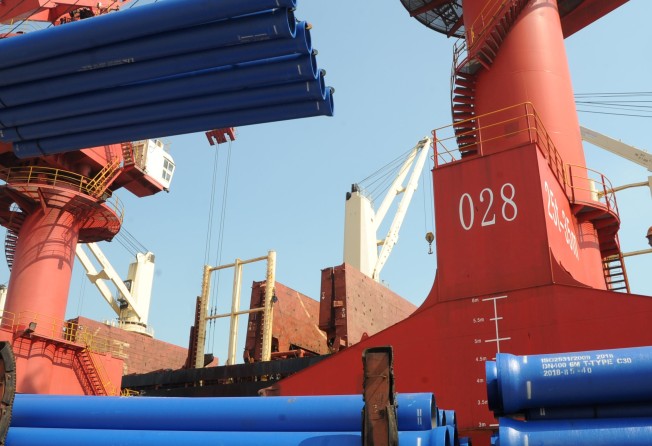US is winning the trade war, and Chinese growth falling to 5 per cent will be the proof
David Brown says that much as China would like to maintain its growth rate at the 6-8 per cent annual level, it will have to accept that the Trump administration has the upper hand in the trade stand-off, and a slowdown is inevitable

China has its work cut out to keep economic growth motoring above 5 per cent over the next few years. It is no good looking askance to the United States, where growth is steaming along, and hoping continued global recovery acts as a boiler-room for faster economic expansion. The status quo is changing and the heyday of easy global pickings is over. The threat of an all-out trade war with the US, slower global growth and an imminent end to world super-stimulus raises the odds that China’s growth rate is already grinding to a much slower pace than Beijing would like.
China has always been able to rely upon strong external demand for its exports and a dynamic pace of internal growth as rapid domestic investment and changing consumer needs have seen a new, go-ahead economy take shape. There is no reason for that to change, but Beijing should accept it will happen at a much slower pace in future.
Annual gross domestic product growth in the order of 6-8 per cent cannot go on forever and there is a very real chance growth could slow very sharply to 5 per cent or even lower in the next few years, unless Beijing takes strong steps to mitigate the risk.
The greatest danger in the short term is the spectre of the US-China trade dispute spiralling out of control, with the potential to knock growth expectations on both sides. US President Donald Trump is unlikely to back down, especially since he is in high spirits over the US economy expanding at its fastest pace in nearly four years, with second-quarter GDP growth increasing to 4.1 per cent. No matter that the spurt was due to one-off factors, with soybean farmers rushing to beat retaliatory trade tariffs and US consumers blowing their recent tax-cut bonanzas.
Watch: US soybean farmers hope for an early end to trade war
Trump’s current approval ratings are running at high levels, reinforcing his belief that he is on the right track politically. China’s potential exposure to a trade war is much greater than the US’, and Trump knows he has the upper hand. China’s export reliance on the US market is much greater than American dependence on China, by a multiple of five times. It is the president’s trump card.
According to estimates by the International Monetary Fund, a full-blown trade war could knock as much as 1-1.5 per cent off China’s growth rate, while the impact on the US might be more limited, to the tune of 0.1-0.3 per cent shaved off growth, thanks to the US economy’s relatively greater domestic dominance. Given the rapid pace of US growth right now, it is a price Trump probably thinks worth paying to intensify pressure on China.
There are already early signs that world trade flows are beginning to feel the pinch, with emerging markets looking particularly exposed. Underlying emerging market export volumes this year are down by around 6 per cent from a year ago. If Trump carries out his threat to lump trade tariffs on a half trillion dollars of Chinese exports going into America, global economic confidence could be in for a severe shock.
It is not just the impact on China’s export sector through lost output, investment and jobs, but the likely knock-on effects to consumer confidence and retail spending as activity cools. Domestic demand would suffer as multiplier effects sweep through the economy. If the crisis escalates, China could end up caught between a rock and a hard place in terms of available policy options.
Just when Beijing is trying to damp down potential overheating in the housing and loans markets, pressure is mounting to open up China’s monetary and fiscal policy levers to counteract potential export drag. Clearly, competitive yuan devaluation is not a viable option as Washington is likely to fight with fire with a weaker dollar. It is really down to what Beijing manages to stump up by way of cheaper credit and a much freer flow of fiscal stimulus. In reality, its hands are tied.
The odds are Beijing has to bite the bullet and accept an inevitable slowdown in growth towards 5 per cent. China is fighting a losing battle unless Beijing concedes to Trump – an unlikely outcome.
David Brown is chief executive of New View Economics